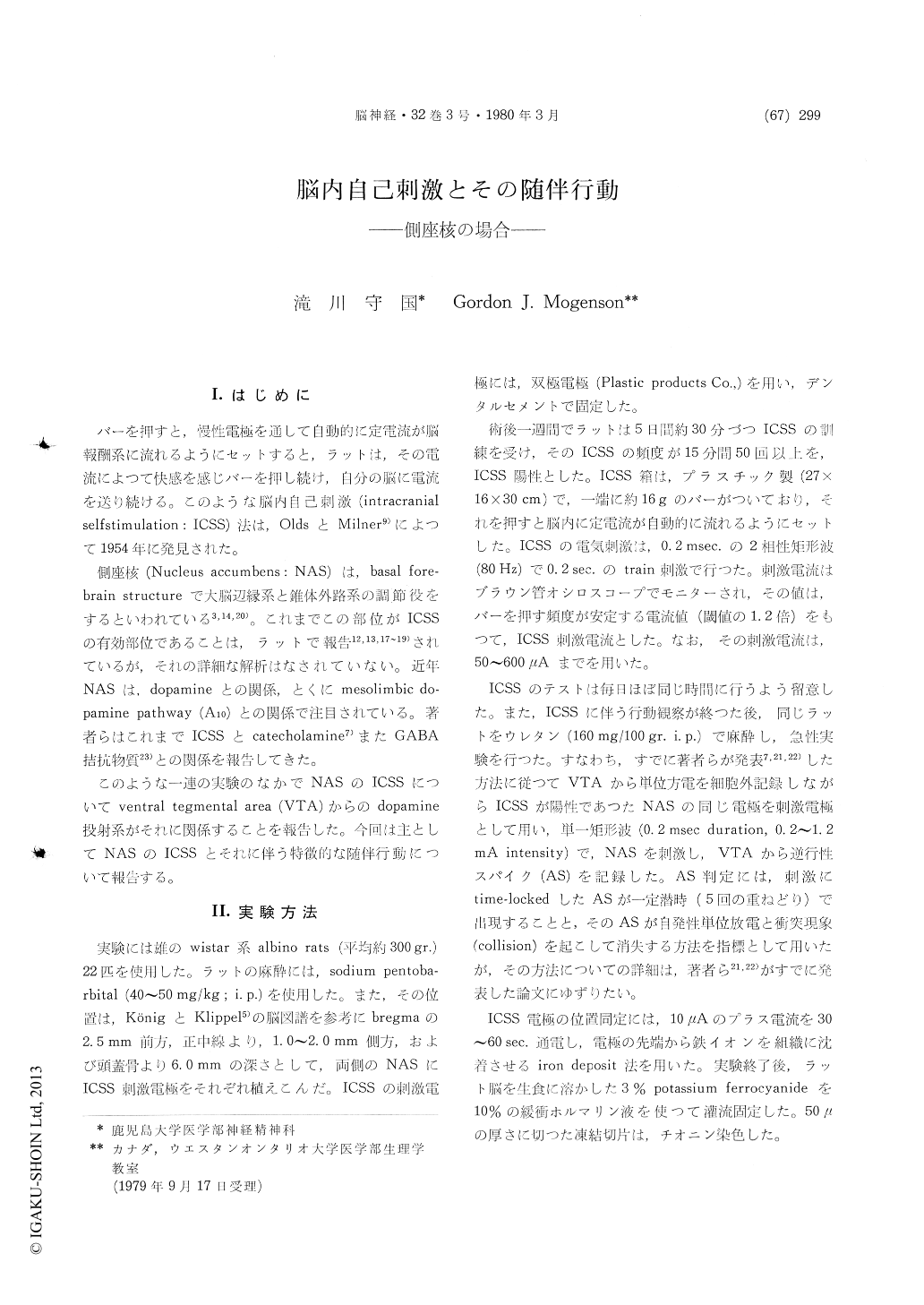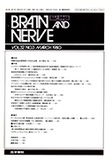Japanese
English
- 有料閲覧
- Abstract 文献概要
- 1ページ目 Look Inside
I.はじめに
バーを押すと,慢性電極を通して自動的に定電流が脳報酬系に流れるようにセットすると,ラットは,その電流によつて快感を感じバーを押し続け,自分の脳に電流を送り続ける。このような脳内自己刺激(intracranialselfstimulation:ICSS)法は,OldsとMilner9)によつて1954年に発見された。
側座核(Nucleus accumbens:NAS)は,basal fore—brain structureで大脳辺縁系と錐体外路系の調節役をするといわれている3,14,20)。これまでこの部位がICSSの有効部位であることは,ラットで報告12,13,17〜19)されているが,それの詳細な解析はなされていない。近年NASは,dopamineとの関係,とくにmesolimbic do—pamine pathway (A10)との関係で注目されている。著者らはこれまでICSSとcatecholamine7)またGABA拮抗物質23)との関係を報告してきた。
In recent years, the nucleus accumbens (NAS) has gained prominance because of an interest in the role of catecholamine in the intracranial self-stimulation (ICSS). The NAS receives strong pro-jections from dopamine of the ventral tegmental area (VTA) which form the meso-limbic dopamine pathway (A10). The major purpose of the present study was to investigate the ICSS of NAS with special emphasis on its associated behavior. The results obtained were as follows:
1. ICSS was observed in rats with electrodes in the NAS. The rate of its ICSS was 230+142/15 min.
2. Antidromic spikes (AS) in the VTA were observed with stimulation of NAS including stimu-lation of sites associated with ICSS. The latency of AS was 25.5±4.3 msec. (range 10.0-42.0 msec.).
3. ICSS of NAS was chiefly associated with "approach-escape" behavior and/or sniffing for which its electrodes were observed to distribute on widespread scatter through NAS. The electrodes of digging and/or licking groups were localized historogically in the vicinity of the commissura anterior.

Copyright © 1980, Igaku-Shoin Ltd. All rights reserved.


